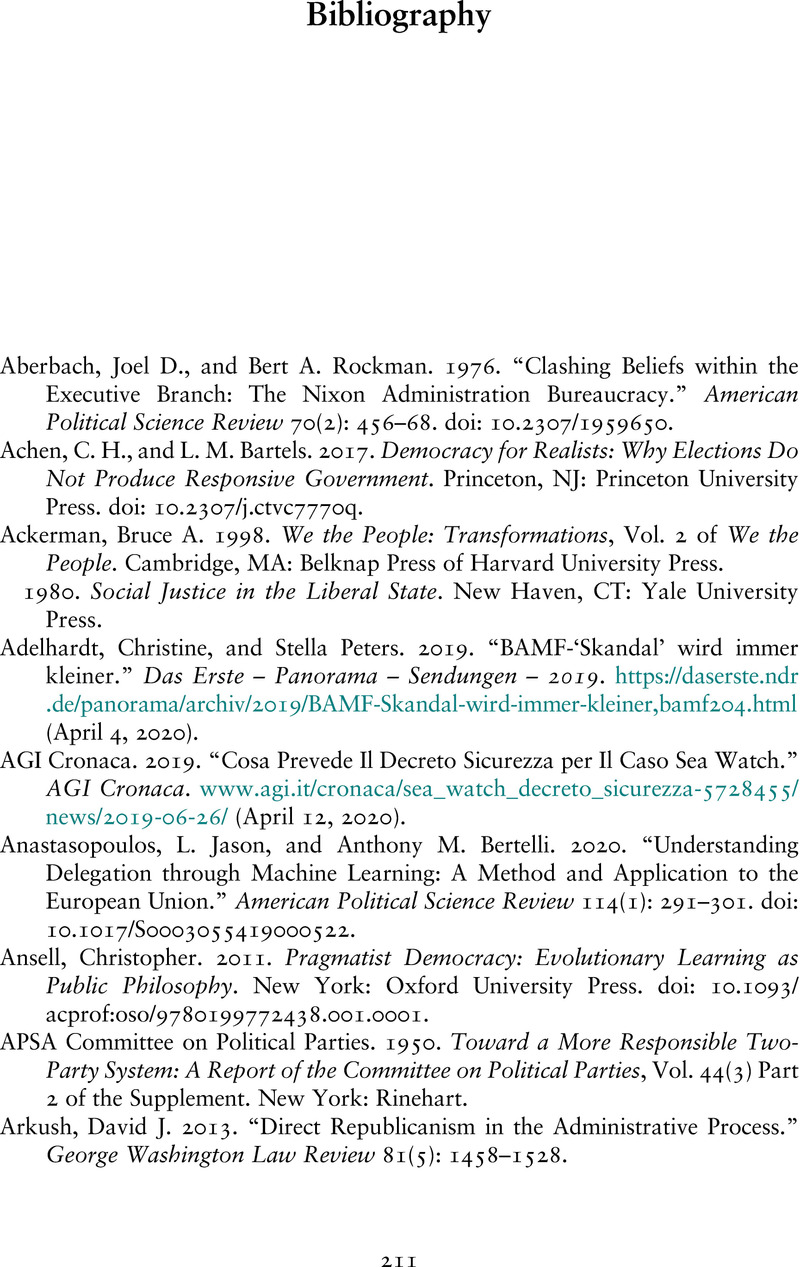Book contents
- Democracy Administered
- Democracy Administered
- Copyright page
- Dedication
- Epigraph
- Contents
- Figures
- Tables
- Preface
- 1 Democracy from Public Administration
- 2 Accountability Values
- 3 Process Values
- 4 Governance Structures and Democratic Values
- 5 The Value Reinforcement Hypothesis
- 6 The Complementarity Principle
- 7 Further Problems for Democracy Administered
- Bibliography
- Index
- References
Bibliography
Published online by Cambridge University Press: 20 August 2021
- Democracy Administered
- Democracy Administered
- Copyright page
- Dedication
- Epigraph
- Contents
- Figures
- Tables
- Preface
- 1 Democracy from Public Administration
- 2 Accountability Values
- 3 Process Values
- 4 Governance Structures and Democratic Values
- 5 The Value Reinforcement Hypothesis
- 6 The Complementarity Principle
- 7 Further Problems for Democracy Administered
- Bibliography
- Index
- References
Summary

- Type
- Chapter
- Information
- Democracy AdministeredHow Public Administration Shapes Representative Government, pp. 211 - 234Publisher: Cambridge University PressPrint publication year: 2021



